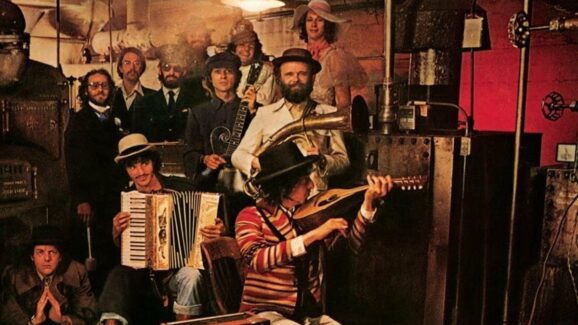There are a lot of elements that build the colossal legacy of Jamiroquai and the band’s frontman, Jay Kay. Whether it’s the iconic horned silhouette that graces his album artworks, hearing one of his many hit records echo from a car driving by, or becoming a full-fledged member of his dedicated and unwavering fanbase, there is a strong chance Kay’s music has entered your ears in one way or another. Kay is a rare artist who crafted his lane early on, and his colorful discography is a testament to the artistic growth most artists only dream of achieving. A career this easy to praise doesn’t come easy, and Kay’s struggles with his fast-paced rise to stardom can be heard most vibrantly on Jamiroquai’s sophomore effort, The Return of the Space Cowboy. Arguably the most vulnerable and expansive album of his career, Kay’s pop sensibilities deliver poignant observations of the world around the artist as he finds himself in the gray area between solidified star and sophomore slump.
Originally released on October 17, 1994, The Return of The Space Cowboy celebrates its 30th anniversary in 2024. Even three decades later, this masterclass of funk fusion still feels as impactful as it did the first time you came across its eleven tracks (twelve if you include the Japanese CD bonus track, and 13 if you include the U.S. bonus track). Musically, it would seem that Kay breezed through the pressures of a successful debut and achieved an expansion of his sound that harkened back to his debut while exploring the limits of his fusion work. In reality, the “second-album syndrome” was weighing heavily on Jamiroquai’s leader. According to the booklet from the 20th Anniversary Edition of The Return of The Space Cowboy, Kay’s drug use was interfering with the recording of the album as Kay would find himself disinterested in anything that would result from a session. Kay also ran into writer’s block; since his debut album was such a success, he no longer had the same struggles to pull from when writing.
Kay’s failed attempts to write about his own life may explain why The Return of the Space Cowboy focuses on many societal issues. The album’s underlying theme feels like it is more of a mirror being held up to the listener in hopes that we can see through his lively production prowess and feel the vulnerability in these lyrics. The tracklist contradicts itself sonically, putting gentle, soulful ballads like “Stillness In Time,” which might be one of Jamiroquai’s best songs, next to the neck-breaking rock-influenced “The Kids” only gives listeners a hint at the headspace Kay must’ve been in during this time. Despite the constant tone shifts, The Return of the Space Cowboy never feels jumbled. Kay’s ability to connect themes and use nuanced recording techniques to emphasize the emotions in his words is precisely what makes Jamiroquai such a timeless act, and the feelings Kay was dealing with on his second outing allowed him to achieve a sprawling sonic landscape.
Thirty years later, Jamiroquai’s The Return of the Space Cowboy still feels refreshing and urgent. While the album received a somewhat lukewarm reception upon release, it has become some of the best music the band has ever released. A sophomore album could make or break an artist, especially in 1994, when you still needed a major label’s backing to get significant radio play and a proper promotional budget. Thankfully, Jamiroquai successfully navigated their turmoils and emerged with a stunning effort that not only proved they were more than a one-trick band but were capable of bringing their loftiest visions to life in a meaningful and enticing way.









